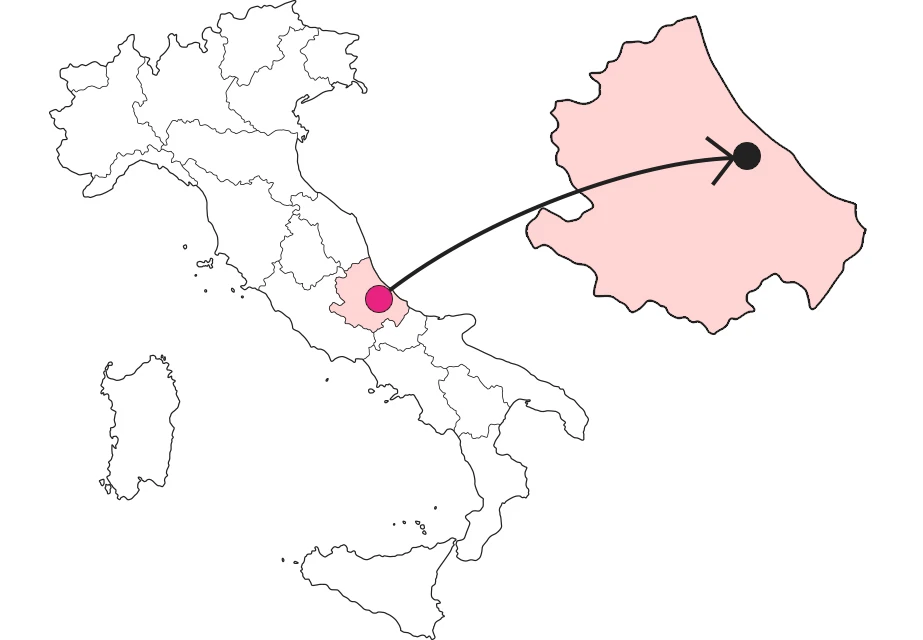

Where is

What it is and where it is
For the people of Abruzzo, Majella is the "mother mountain." This consideration is due to its grandeur, but above all to a sacredness of place felt since prehistoric times. This reverence, so to speak, has been reaffirmed in a modern sense by the establishment of the National Park, which protects much of the massif. Among the various access points to the area, Lama dei Peligni is notable for the presence of a visitor center and a wildlife area that encourages a close encounter with the Abruzzo chamois.
Why it is special
At first glance, one would think that the Abruzzi chamois is a close relative of the chamois that populate much of the Alps. True, but on close observation the differences jump out at you. Starting with the head, yes equipped with the characteristic permanent hook-shaped horns, but far longer than those of northern chamois. And then the "mask" of dark fur covering the eyes, standing out against the clear throat. This explains why it has been called "the most beautiful chamois in the world."
Not to be missed
Lama dei Peligni played a key role in saving the Abruzzo chamois from extinction. Not far from the town, in fact, the first wildlife area dedicated to captive breeding of the species was established in 1990 with the prospect of repopulating other Apennine mountains with the new specimens. This protected area still offers today, accompanied by a nature guide, binoculars in hand, the easiest opportunity to observe these wonderful mountain dwellers.
A bit of history
Before the spread of firearms, this species of chamois was present over much of the south-central Apennines. The fact that we speak of the Abruzzi chamois, however, suggests how indiscriminate hunting gradually forced it into the most inaccessible mountains of this one region. From here, however, began the recent recovery that has raised the number of specimens to nearly three thousand, confirming the prospect of restoring the species from the Sibillini Mountains to the Pollino.
Curiosity
The Abruzzi chamois was safe, so to speak, as long as its hunting was exclusive to the Royal Household. In the early twentieth century, with the renunciation of this prerogative, the troubles began that in a few years brought the species to the brink of extinction. But it was King Victor Emmanuel III himself in 1913 who signed a decree, the first of its kind, for the protection of the "very rare and endemic Abruzzi Chamois."
Enter the Map of Italy's Undiscovered Wonders and find treasures where you least expect it... Inspire, Recommend, Share...
Collections
The Map thanks:
Enter the Map of Italy's Undiscovered Wonders and find treasures where you least expect it... Inspire, Recommend, Share...
Where is

Collections


